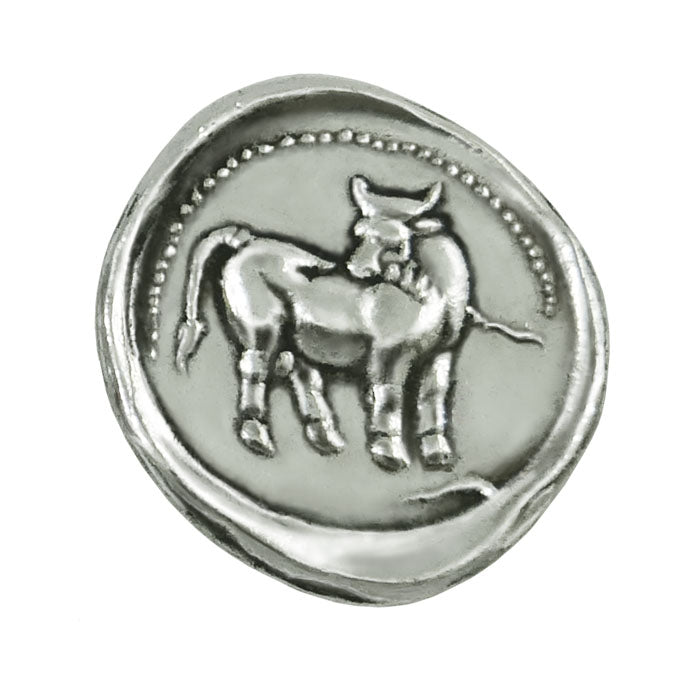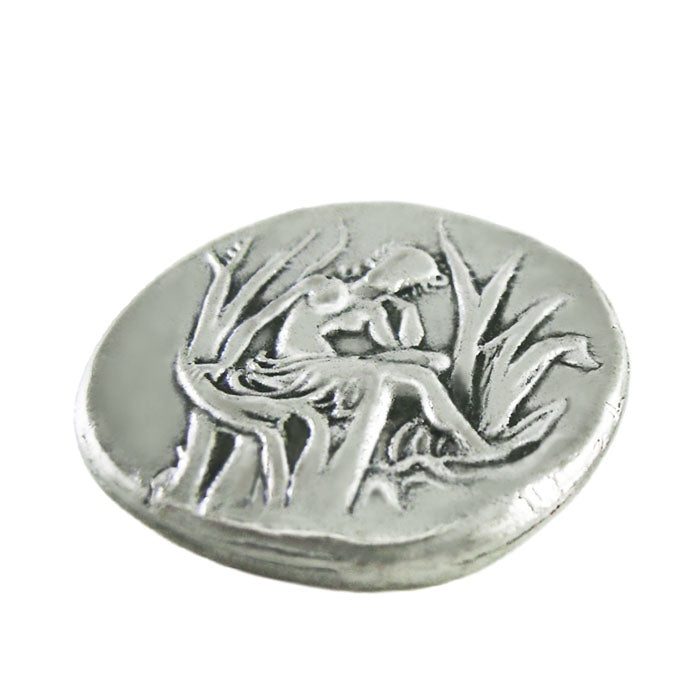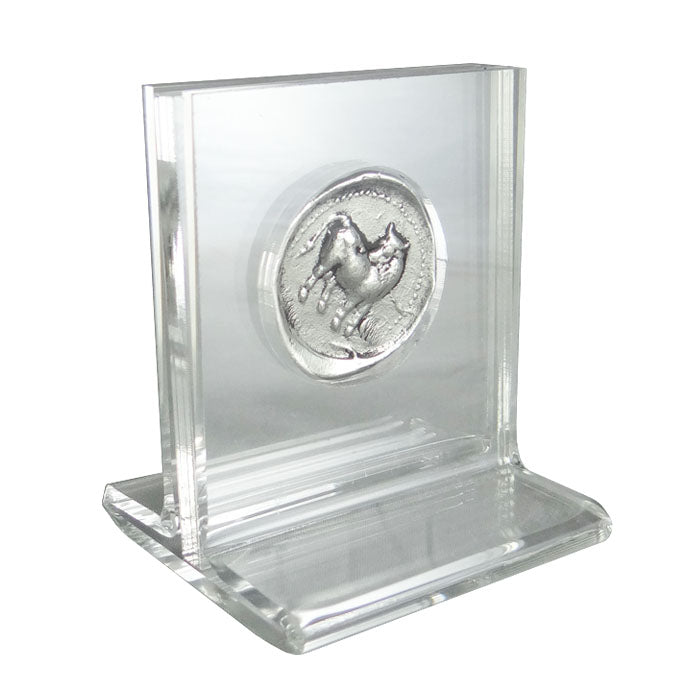Talismancharm.com
Silver Stater of Gortys
Silver Stater of Gortys
Couldn't load pickup availability
Inspired by ancient Greece, with its rich culture, history and art, we created the silver-plated replica of the silver stater of Gortyna, with Europa on one side and Zeus transformed into a calm bull on the other. An ideal gift for lovers of the ancient Greek world, as well as for coin collectors.
Weight: 56.5 g
Dimensions (LxHxW): 5 cm x 6 cm x 5 cm
Details: with acrylic case
Gross Weight: 86 g
Includes: Gift Wrapping - Description Greek & English
Region: Crete
Material: Brass Silver Plated
Date: 325 BC
The silver stater (didrachm) of Gortynia (325 BC) depicts on the obverse Europa with a veil covering her legs from the waist down, while she rests on the branches of the sacred plane tree, resting her head on her hand. On the reverse, Zeus is seen in the form of a bull turning his head to the left.
Gortyna was the capital of Crete during the Roman era and experienced great prosperity during the Minoan period, between 1600 – 1100 BC. Gortyna was one of the first cities in Crete to issue coins from the 5th to the 1st century BC. The Gortyna didrachm revives the entire myth of Zeus and Europa, the best-known myth about the Cretan generation.
Europa was the daughter of King Agenor of Greek Phoenicia. One day, as she was lying on the shore, Zeus the Cretan saw her from the sanctuary of Mount Ida and fell in love with her. Able to take any form he wanted, the god appeared before her in the form of a bull and knelt at her feet. She climbed onto the animal's back and he rushed into the sea and carried her to Crete, where he joined her in a flowering grove.
From their love was born Minos, who founded a powerful maritime empire and contributed to the development of the Minoan civilization. The original is in the Heraklion Museum in Crete and its weight is 11.88 grams.
The first coins were made in Asia Minor from electrum, an alloy of gold and silver, at the end of the 7th century BC. The obverse of the coins mainly depicted the symbols of the cities, the deities that protected them, mythical figures or wealth-producing products of the region, depictions that made the origin of the coins in question recognizable.
The precious metal, mainly silver, gave the value, the small shape made it easy to transport and the symbol of each issuing authority guaranteed its weight and authenticity. At the end of the 5th century BC, bronze coins were also circulated for their small daily transactions.
Share








